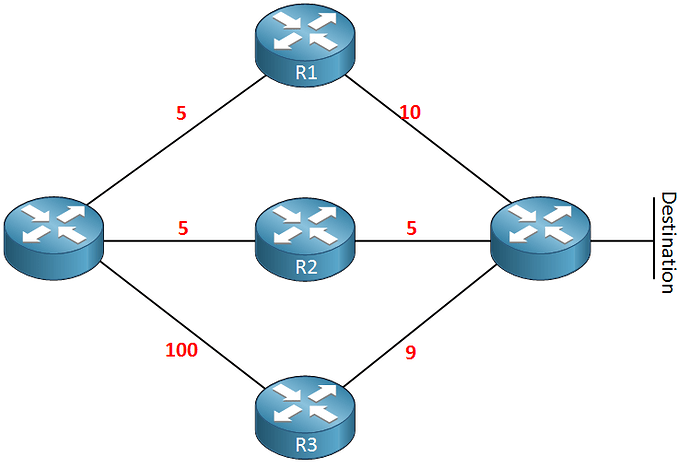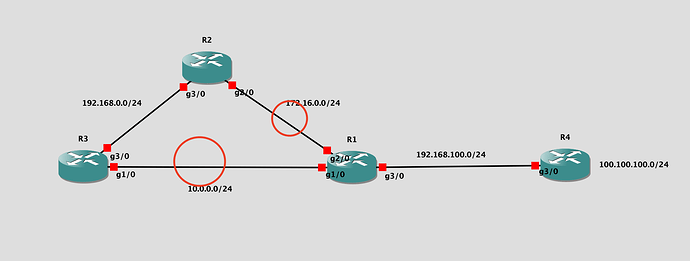Hello Michael
Strictly speaking, the split-horizon rule states that you should not advertise to your neighbor what was already learned from them. To put it a different way, if RouterA advertises a network to RouterB through a particular interface, RouterB will NOT advertise the network back to RouterA through that interface.
Now this often does result in what you described, that a network is not advertised out of an interface that this the best path to reach that destination, but not always. This is not the definition of the split horizon rule.
Split horizon may also be applied when the network being learned via an interface (and not being sent back through that interface) is not the best path to the destination.
Look at the following diagram:
Here, R2 is advertising to the leftmost router a path to the Destination. R1 is also advertising this same network to the leftmost router. The best path is via R2, but the leftmost router will still apply the split horizon rule to its interface connected with R1, even though that isn’t the best path to the destination.
The split horizon rule does not evaluate if that particular interface is the best path. It may be, it may not be. It simply states that if you learned about a network via interface X, don’t send info about that network out that same interface.
I hope this has been helpful!
Laz

